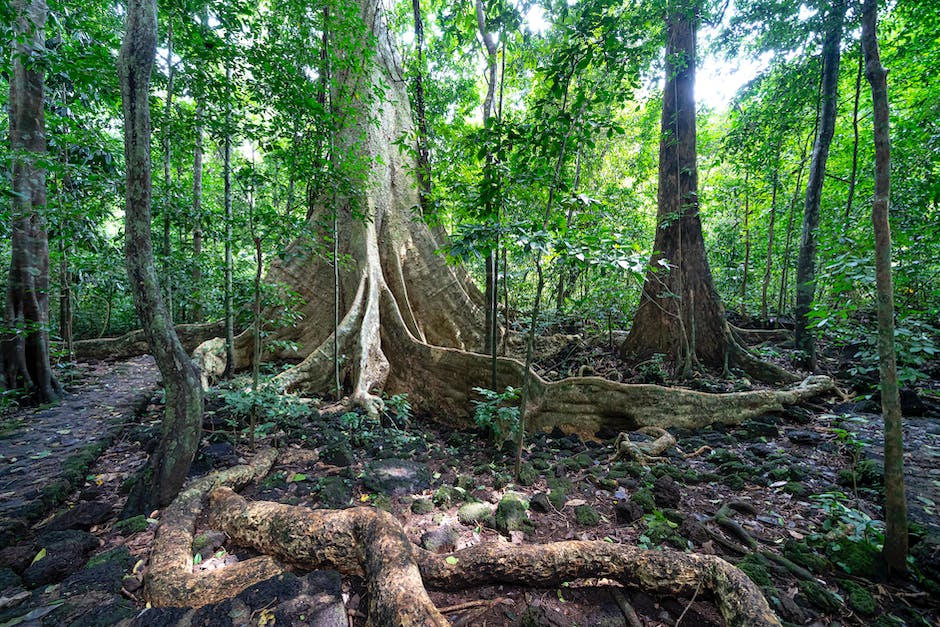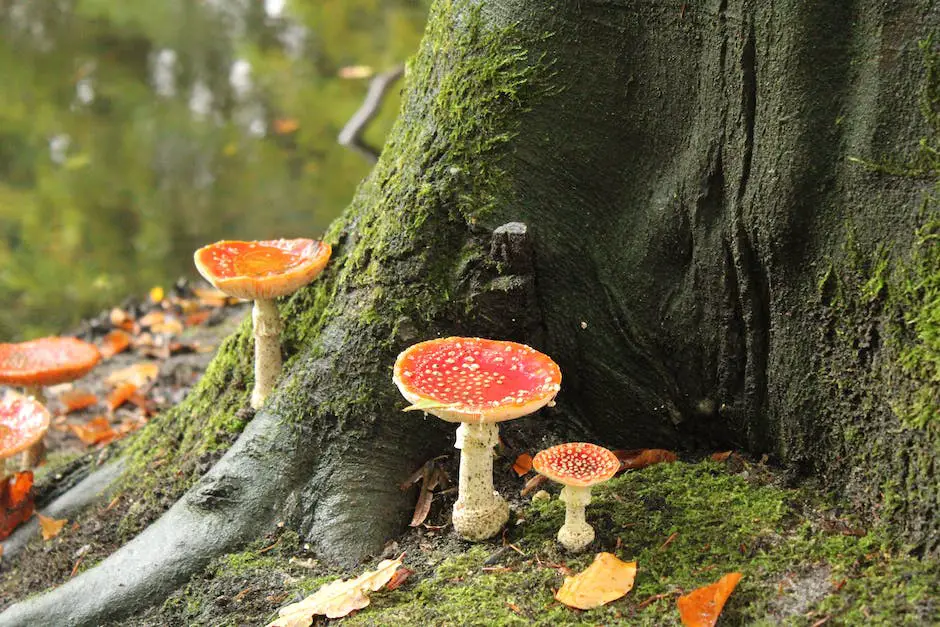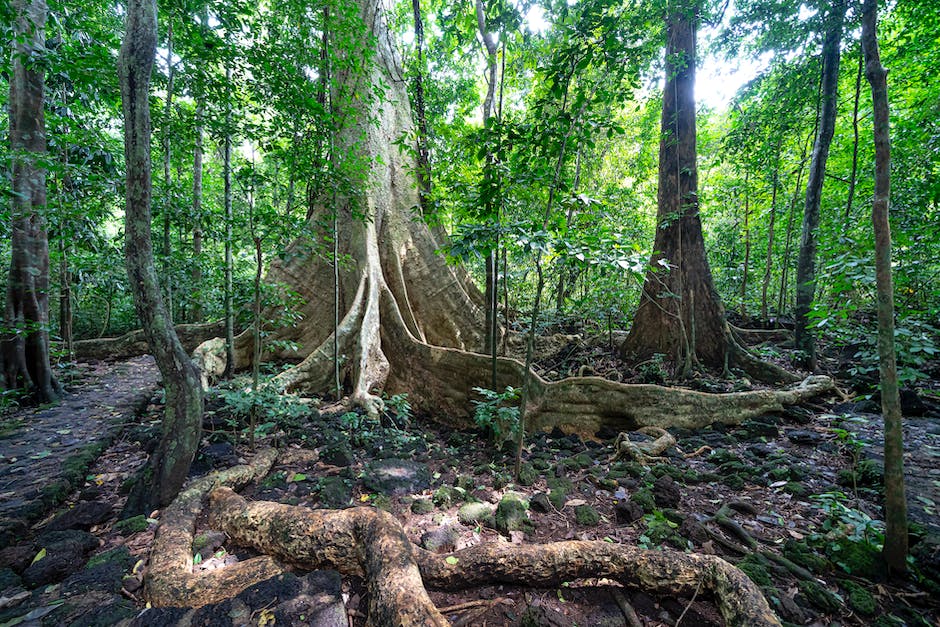Pine tree roots are surprisingly big. They can grow up to 30 feet in length and 3 feet in diameter. Pine tree roots anchor the trees to the ground and help them absorb water and nutrients.
Pine trees have relatively shallow root systems that are typically about 1/3 as deep as the tree is tall. However, the roots can spread 2-3 times the width of the tree.
How far to pine tree roots spread?
Pine trees have extensive root systems that can spread 2-3 times the width of the tree’s drip line. The roots are shallow, however, and do not extend very deep into the ground. Pine trees are very adaptable and can grow in a variety of soil types and conditions.
Pine trees have roots that extend straight down into the soil, which means they have very little impact on your foundation. This is good news for your home’s foundation, as it is one less thing to worry about!
Can pine tree roots damage house
When tree roots damage a house foundation, it is typically because the roots are seeking out moisture and they find it more easily in areas where the soil is loose. The roots can also grow more easily in areas where there is mulch, since the mulch retains moisture. Once the roots have penetrated the foundation, they can cause cracking and other damage.
Pine trees are known to have deep and widespread roots that help anchor them into the ground and provide stability. The roots of pine trees are known to best grow in sandy, slit or loamy soil with an average particle size of 0002-002mm. Small pine trees have root length of 4 to 15 feet while roots of larger pines can extend up to a length of 35 to 75 feet deep. Pine trees have a high tolerance to drought and are able to extract water from deep in the ground, making them well-suited to dry or rocky conditions.
Are pine trees more likely to fall?
Evergreen trees, pines in particular, are more likely to come down in high winds because their canopy is always present and it’s thick and heavy. This creates a “windsail effect” that makes the tree more susceptible to being toppled.
A pine tree that has all brown needles is most likely dead and should be removed. If a pine tree dies slowly after being damaged in a storm, it may keep yellow-green needles for a year or more and then suddenly turn yellow and quickly progress to brown.
What is the danger of pine trees?
Pine trees contribute to air pollution by releasing gases that react with airborne chemicals. These chemicals are produced by human activity and create tiny, invisible particles that muddy the air.
Applying a shallow layer of topsoil around and over the exposed roots of a tree can help protect the roots, make mowing easier and reduce tripping hazards. Apply just enough to cover the roots by about a half inch. Applying too much soil over the roots of a tree can suffocate them and cause tree damage or death.
How do I get rid of pine tree roots in my lawn
When cutting roots around a tree, be sure to mark the area you’ll be cutting and digging a hole. Use a pruning saw to cut the root cleanly. Carefully pull the cut root up and away from the tree, taking care not to damage the tree. Once the root is removed, be sure to refill the hole with soil from the same area.
Pine trees are safe to plant near homes because of their shallow root structure. Pine trees have a taproot system, which means that their roots are mostly concentrated in the top layer of soil. This shallow root structure makes pine trees less likely to damage foundations or underground utility lines.
What trees should not be planted close to a house?
You should avoid planting red oak, sweetgum, Bradford pear, Lombardy poplar, ginkgo biloba, eucalyptus, mulberry, and weeping willow trees on your property. These trees are known for being messy, dropping a lot of leaves and fruit, and having shallow root systems that can damage foundations and sidewalks.
Pines are among the longest-lived trees in the world. The Great Basin bristlecone pine is the oldest living tree species, with some individuals living for over 4,000 years. Methuselah, the oldest known individual of this species, is over 4,800 years old and is one of the oldest living organisms in the world.
How close to a pine tree can you dig
To avoid damaging your tree’s roots, you should stay at least 84 to 126 feet away from the trunk when excavating.
Pine trees have an aggressive root system that can connect with other trees. The pine’s tap root system helps them hold their structure and can even connect with other trees.
How much room does a pine tree need?
A 7×8 foot spacing between seedlings is the minimum planting density recommended for white pine, but a 6×6 foot spacing is better. This is because white pines need room to grow, and a smaller spacing will allow them to become more dense and shading.
A leaning pine tree is not necessarily a hazard, but it is important to check for indicators that it may fall. Standing at a safe distance, look for cracks in the trunk or roots, dead branches, or fungus growth. Also, check for cavities or soil displacement. If you see any of these indicators, the tree may be unstable and should be assessed by a certified arborist.
Do pine trees deplete the soil
An established pine’s roots can absorb substantial amounts of nutrients from the soil, leaving the surrounding area depleted. Pines are especially well-suited to survive in poor soil conditions because of their deep and extensive root system.
There are a few signs that your tree may be in danger of falling. If your tree starts leaning or shifts suddenly, this is a sign that the roots are not holding properly and the tree is at risk of falling. If your tree has multiple trunks, this also increases the risk of the tree falling as one of the trunks may be weaker than the others. If your tree has a large hollow, this means that the tree is not as strong as it used to be and is more likely to fall. If your tree drops branches for no apparent reason, this is another sign that the tree is not as healthy as it should be and is at risk of falling. If mushrooms begin growing on or under your tree, this is a sign that the tree is decaying and is more likely to fall. Finally, if other nearby trees have recently fallen, this is a sign that the ground around your tree is not stable and your tree is at risk of falling. If you see any of these signs, it is important to have an expert come and take a look at your tree to assess the situation and determine if the tree needs to be removed.
Are pine trees good for your yard
Pine trees are a great addition to any lawn. They are evergreen, tall, and provide seasonal appeal. They are also easy to grow and take care of.
The above is not entirely true. Once a tree has been cut, the roots cannot grow anymore because the leaves are necessary to provide the food to fuel root growth. However, the roots can continue to produce sprouts with leaves. In time, there may be more root growth.
Will a pine tree live if you cut the top off
Topping large evergreen trees is not recommended as it can lead to internal decay, disease or damaging insects. Topping also removes the most productive portion of the tree.
Pine bark beetles can ravage pine forests, and their populations can build up rapidly during outbreak years. This can cause extensive damage to trees and disrupt forest management practices aimed at wood and fiber production.
Is burning pine needles toxic
If you have a fire pit, it’s important to be aware that the smoke from coniferous needles is unsafe to breathe. The needles contain nitrogen and substances called terpenes, which are highly toxic when burned. This can cause respiratory problems for people around the fire pit, so it’s important to be aware of the risks.
This is an incredible story! It just goes to show that you never know what might be hiding inside your body. In this case, a man had a tree growing inside his lungs for who knows how long. Thankfully, the surgeons were able to remove it without any complications. It’s amazing that something like this is even possible.
Final Words
There is no definitive answer to this question as pine tree roots can vary significantly in size depending on the species and age of the tree. However, as a general rule, pine tree roots tend to be shallower and less extensive than those of other types of trees. This is due to the fact that pine trees have shallow root systems that are typically only a few feet deep.
In conclusion, the roots of pine trees are very big and can grow to be very long. The roots of pine trees are also very strong and can hold the tree up even when the tree is very tall.
Mark Hoffman is a dedicated arborist and tree care specialist with over a decade of experience. His love for trees began when he visited Yosemite National Park as a teenager and was awestruck by the giant sequoias. Mark pursued his passion by studying forestry at Michigan Technological University, where he earned a Bachelor of Science degree.
Since then, he has worked tirelessly in the field of arboriculture, helping to preserve and protect trees in his community. His expertise and dedication have made him a respected leader in the industry and a valuable resource for anyone seeking advice on tree care.
